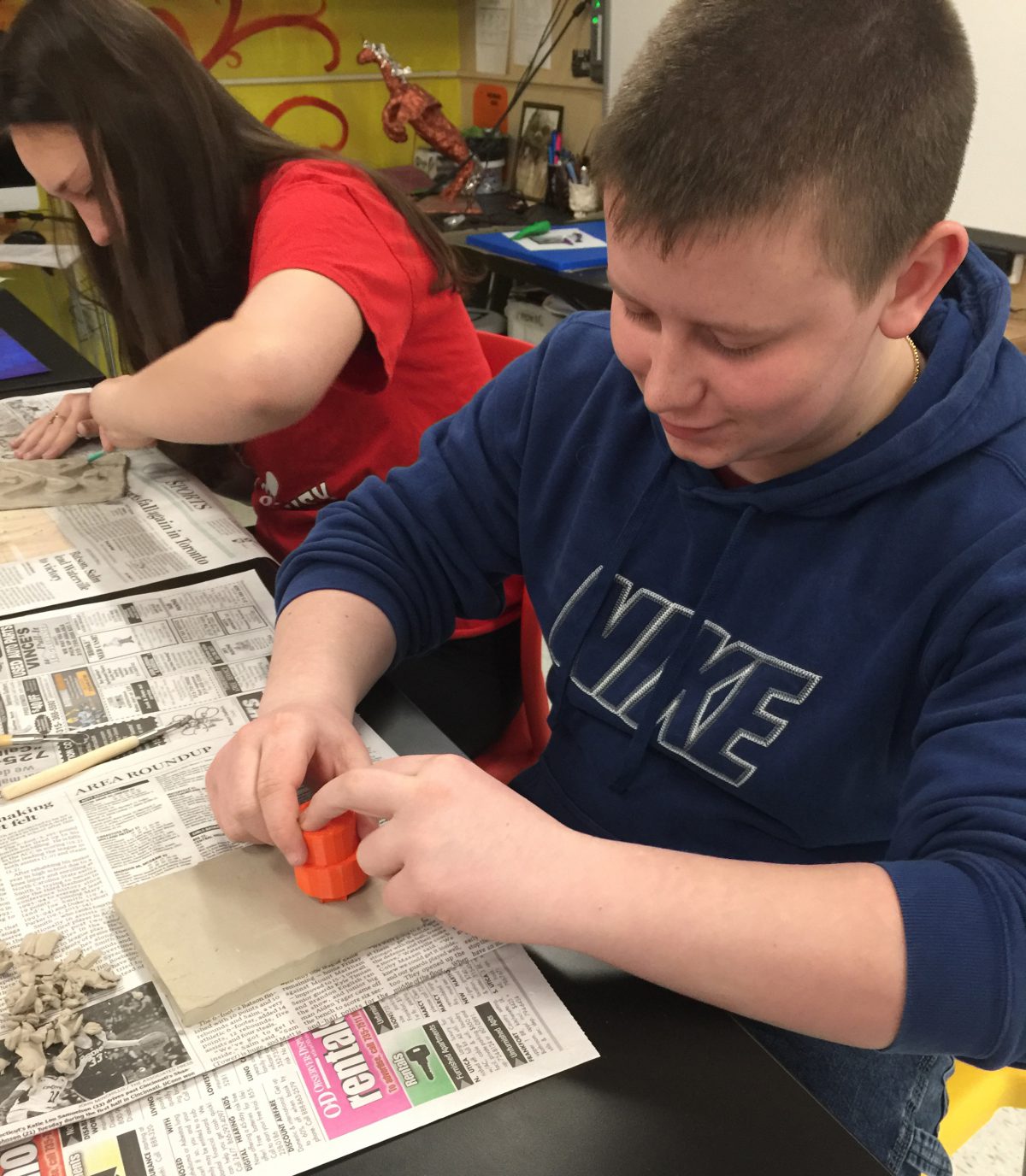Q: What do topographical maps, dinosaur bones, ceramic stamps and the Millennium Falcon have in common?
A: These are all objects replicated by 3D printers at Herkimer Central Schools.
The district obtained four MakerBot 3D printers over the winter, purchasing three machines for about $7,000 and winning a fourth machine as a contest prize. The printers use liquid plastic to convert computer designs into three-dimensional objects.
Designs come to life
“If you can design it, you can hold it in your hands,” technology coordinator Ryan Orilio explained. “It lets you take a concept or a design off the page and make it come to life.”
In conjunction with design applications such as TinkerCad, students can create their own designs, or modify existing ones. Or the 3D printer can function like a miniature factory, creating identical copies of any object from the thousands of designs available online — like the model of the Millennium Falcon spaceship from the movie “Star Wars” printed by Orilio in bright yellow plastic. (See a video of the Millennium Falcon in action on the district’s official Instagram account.)
At Herkimer Elementary, Leah Peyton’s students are using 3D printing for a “Deserted Island” project. The project asks students to imagine they are stranded in a hostile landscape. Students will then design and print a tool to help them in their imagined environment.
In Michael Whitton’s Earth Science class, students will use 3D printing to create topographical maps.
The next level
And in Heather McCutcheon’s art classroom at the high school, students are incorporating 3D printing into not only their artwork, but the entire process of creating art.
McCutcheon said she first saw 3D printing a few years ago at a technology conference, “and once I saw it, I knew I wanted to do something with it.”
Now that McCutcheon’s classroom is home to one of the district’s four 3D printers, she is constantly thinking of new uses for the technology, she said.
“The usual advice for 3D printing is, ‘Create something,’ and that’s it,” McCutcheon noted. “But I want my students to take it to the next level.”
So her sculpture students are creating 3D printed objects to incorporate with other materials. Her graphic design students designed, printed, marketed and sold objects, from keychains to toys. And ceramics students created stamps to imprint their initials on their work — “like a maker’s mark,” McCutcheon explained.
McCutcheon said her students tease her at times about her enthusiasm, but they too are excited about the possibilities of 3D printing.
“Most of them have never been able to do something like this,” she said. “It’s helping them be creative thinkers and problem solvers.”

